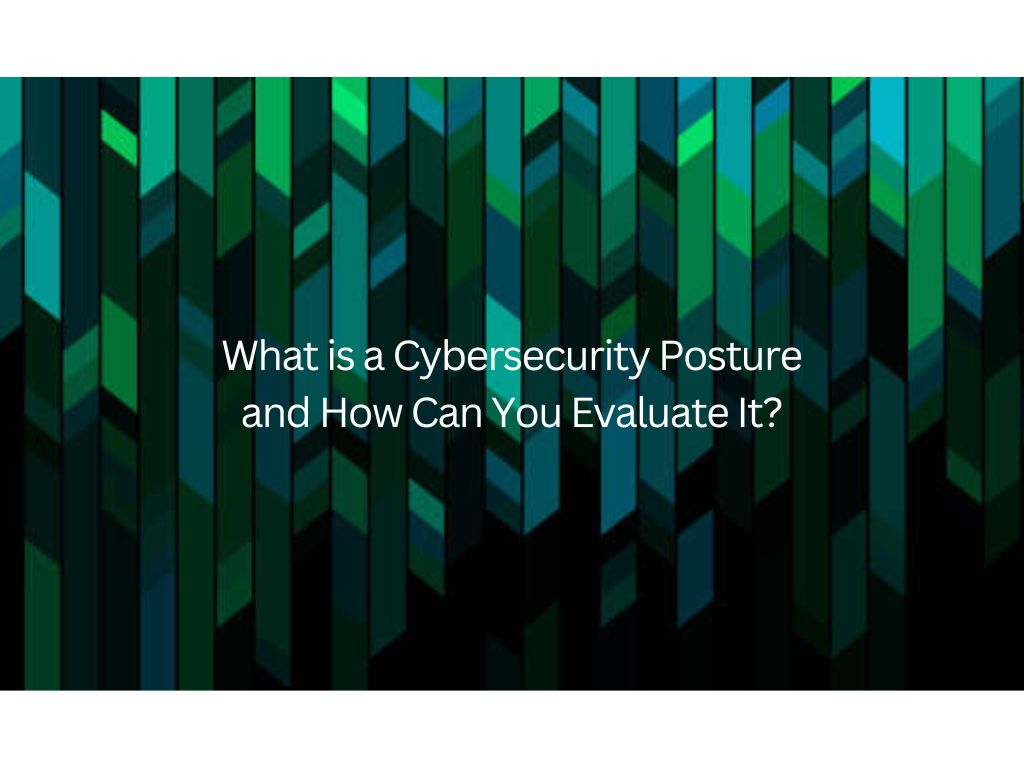In an era where cyber threats are growing in sophistication and frequency, establishing a strong cybersecurity posture is crucial for organizations. But what exactly is a cybersecurity posture, and how can you evaluate and improve it? In this blog post, we will explore the concept of cybersecurity posture, and its significance, and provide answers to common questions on evaluating and enhancing your organization’s security defenses.
Q: What is a cybersecurity posture?
A cybersecurity posture refers to the overall state of an organization’s security measures, practices, and capabilities in defending against cyber threats. It encompasses various elements, including policies, procedures, technologies, employee awareness, incident response capabilities, and risk management strategies. A strong cybersecurity posture ensures that an organization is prepared to detect, prevent, and respond to cybersecurity incidents effectively.
Q: Why is evaluating cybersecurity posture important?
Evaluating your organization’s cybersecurity posture is essential for several reasons. It allows you to identify vulnerabilities and weaknesses in your security defenses, assess your readiness to mitigate cyber threats, and prioritize investments in security controls and technologies. Regular evaluations help you stay proactive and adaptive in the face of evolving cyber risks, ensuring the ongoing protection of critical assets and information.
Q: How can you evaluate your cybersecurity posture?
Evaluating your cybersecurity posture involves assessing various components of your security infrastructure and practices. Here are key steps to help you evaluate your cybersecurity posture:
- Conduct a comprehensive risk assessment: Identify potential threats, vulnerabilities, and the potential impact they may have on your organization. This analysis helps prioritize security efforts and allocate resources effectively.
- Review security policies and procedures: Evaluate the clarity, relevance, and adherence to security policies and procedures within your organization. Are they well-defined, up to date, and effectively communicated to employees? Strong policies cover areas such as access control, data handling, incident response, and acceptable technology use.
- Assess employee awareness and training: Gauge the level of awareness and training provided to employees regarding cybersecurity best practices. Regular training sessions, awareness campaigns, and simulated phishing exercises can help educate employees and foster a security-conscious culture.
- Evaluate security controls and technologies: Review the effectiveness of your security controls and technologies. Are they properly configured, up to date, and aligned with industry best practices? Evaluate firewalls, intrusion detection and prevention systems, antivirus solutions, encryption mechanisms, and network architecture.
- Assess incident response capabilities: Evaluate the strength of your organization’s incident response capabilities. Do you have a well-documented and tested incident response plan? Are roles and responsibilities clearly defined? Regularly review and update the plan to ensure it can handle various security incidents effectively.
Q: How can you improve your cybersecurity posture?
Once you have evaluated your cybersecurity posture, consider these strategies to strengthen your security defenses:
- Implement a defense-in-depth approach: Adopt a layered security approach by deploying multiple security measures at various levels. This includes network segmentation, access controls, encryption, regular patching, and strong authentication mechanisms.
- Continuous monitoring and threat intelligence: Implement systems for continuous monitoring of your networks, systems, and applications. Leverage threat intelligence sources to stay informed about emerging threats and proactively defend against them.
- Regular security assessments and penetration testing: Conduct regular security assessments and penetration testing to identify vulnerabilities and weaknesses in your infrastructure. These assessments simulate real-world attacks and help you understand your risk exposure.
- Employee training and awareness: Invest in ongoing cybersecurity training for employees to keep them updated on the latest threats and best practices. Encourage a culture of security awareness and provide mechanisms for reporting suspicious activities.
- Incident response planning and testing: Regularly review and update your incident response plan to reflect the evolving threat landscape. Conduct tabletop exercises and simulations to ensure your team is preparedto effectively respond to security incidents. Test the effectiveness of your plan by simulating different scenarios and identifying areas for improvement.
- Regular security updates and patch management: Stay up to date with security patches and updates for your systems, software, and applications. Implement a robust patch management process to address known vulnerabilities and reduce the risk of exploitation.
- Vendor and third-party risk management: Assess the security posture of your vendors and third-party partners. Ensure they have robust security measures in place to protect your shared data and systems. Regularly review contracts and agreements to include specific security requirements.
- Incident monitoring and response automation: Implement security information and event management (SIEM) tools to monitor your network for potential threats and anomalies. Automated incident response systems can help streamline incident handling and response times.
- Compliance with regulations and standards: Stay compliant with industry-specific regulations and standards relevant to your organization. Regularly review your security practices to ensure alignment with these requirements.
- Engage external cybersecurity experts: Consider partnering with external cybersecurity experts or engaging managed security service providers (MSSPs) to strengthen your cybersecurity posture. Their expertise can help identify blind spots, provide specialized guidance, and offer insights into emerging threats and best practices.
Conclusion: Evaluating and improving your cybersecurity posture is a vital step in safeguarding your organization’s digital assets and sensitive information. By conducting comprehensive assessments, reviewing policies and procedures, assessing employee awareness, and enhancing security controls, you can establish a robust cybersecurity posture. Ongoing monitoring, regular updates, and continuous training are key to maintaining a strong defense against evolving cyber threats. Remember, cybersecurity is a shared responsibility, and a proactive approach is essential to protect your organization from potential risks and vulnerabilities.
